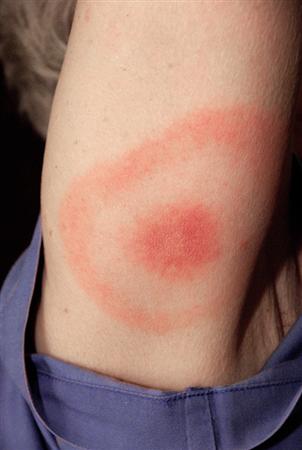Comprehending Lyme Condition-- Vital Awareness for Prevention
Lyme disease stays a significant public wellness issue, largely transmitted via the attacks of infected ticks, specifically in areas with thick greenery. The early recognition of Lyme illness is crucial, yet lots of people continue to be uninformed of its indications or the settings that present the greatest danger.
What Is Lyme Disease?
If left untreated, Lyme condition can advance to a lot more extreme stages, possibly impacting the joints, heart, and nerve system. Clients may experience arthritis, neurological issues, or cardiac conditions. The disease can be testing to detect, as its signs can simulate those of various other diseases. Diagnostic methods commonly involve a combination of medical analysis and laboratory testing, including serological assays to spot antibodies against Borrelia burgdorferi.
Timely recognition and therapy are essential in managing Lyme disease and preventing complications, with very early antibiotic intervention typically causing desirable end results.
How Lyme Condition Spreads
Lyme disease mostly spreads through the bite of contaminated black-legged ticks, likewise referred to as deer ticks, which bring the microorganism Borrelia burgdorferi. These ticks are typically discovered in wooded or grassy locations, usually living on bushes or low vegetation. They need a blood dish from a host, such as human beings or animals, to prosper and recreate.
Transmission typically happens when ticks affix to the skin and continue to be for a long term duration, usually 24 to two days. The danger of infection boosts with the duration of accessory, as the bacterium is sent from the tick's saliva into the host's blood stream. Ticks can be energetic throughout warmer months, specifically in spring and summer season, making outside tasks a potential risk for direct exposure.
While black-legged ticks are the key vectors, various other varieties, such as the Western black-legged tick, can likewise transfer Lyme disease. It is important to be attentive in areas where ticks prevail. Preventative procedures consist of putting on protective garments, utilizing tick repellents, and performing extensive tick checks after exterior tasks to lower the probability of bites and succeeding transmission of Lyme disease.
Signs and Diagnosis
Identifying the signs and symptoms of Lyme condition is critical for timely diagnosis and therapy, as early treatment can considerably affect healing. One of the most well-known early symptom is the erythema migrans rash, which shows up as a round, red lesion with a main cleaning, commonly looking like a "bull's- eye." This rash generally creates within 3 to thirty days after a tick bite and might be gone along with by flu-like signs and symptoms such as high temperature, cools, exhaustion, muscle mass pains, and frustrations.

Medical diagnosis of Lyme disease mostly relies on clinical examination, considering the patient's symptoms and potential direct exposure to ticks in native to the island locations. Lab examinations, including enzyme-linked immunosorbent assays (ELISA) adhered to by Western blot tests, can support the diagnosis yet are not clear-cut in early-stage Lyme condition. Trigger acknowledgment and diagnosis are vital for great site initiating appropriate antibiotic treatment, which is most effective when administered early in the disease course.
Avoidance Approaches
Protecting against Lyme disease needs an aggressive approach, especially for individuals that invest time in locations where ticks are prevalent. In addition, putting pants into socks and making use of tick-repellent products including DEET or permethrin can dramatically minimize the danger of tick attachment.
Routinely evaluating oneself, youngsters, and animals for ticks after outside activities is vital. Ticks ought to be promptly removed using fine-tipped tweezers, understanding them as near to the skin's surface area as possible. It is suggested to bath within 2 hours of returning indoors, as this can assist remove ticks prior to they connect.

Therapy Options
Reliable monitoring of Lyme illness rests on suitable and timely therapy alternatives, which mainly entail antibiotic therapy. The option of antibiotics and the period of therapy normally depend upon the phase of the illness and the intensity of symptoms. Early localized Lyme condition is generally treated with oral anti-biotics such as doxycycline, amoxicillin, or cefuroxime axetil for a duration of 10 to 21 days. This strategy is generally effective in removing the infection and protecting against additional complications. Lymecare Alliance.
In cases of early disseminated Lyme illness, where neurological or cardiac symptoms may occur, a longer program of intravenous antibiotics or oral antibiotics might be called for. For individuals experiencing relentless signs after initial treatment, called Post-Treatment Lyme Illness Disorder (PTLDS), a much more complex management approach might be needed. This can entail a multidisciplinary method, resolving not only the physical signs and symptoms yet likewise psychological facets, as tiredness and cognitive troubles prevail.
It is crucial for individuals to take part in open communication with their doctor to tailor treatment plans to their specific requirements, ensuring the most effective possible results in the monitoring of Lyme illness.
Conclusion
Lyme illness postures considerable health and wellness dangers mostly due to its transmission using infected black-legged ticks. Early recognition of symptoms and prompt medical diagnosis are critical in taking care of the illness properly. Executing preventive measures, such as protective garments and tick repellents, substantially decreases the likelihood of infection. Proceeded understanding and education regarding Lyme condition are essential in mitigating its impact, thereby advertising healthier neighborhoods and protecting public wellness versus this pervasive tick-borne disease.
Lyme disease largely spreads out with the bite of contaminated black-legged ticks, likewise known as deer ticks, which lug the bacterium Borrelia burgdorferi. Lymecare Alliance.While black-legged ticks are the main vectors, other varieties, such as the Western black-legged tick, can likewise send Lyme illness. Preventative procedures consist of putting on protective garments, using tick repellents, and carrying out detailed tick checks after exterior activities to check here decrease the likelihood of attacks and succeeding transmission of Lyme disease
Medical diagnosis of Lyme condition mainly counts on professional evaluation, taking right into account the individual's signs and symptoms and possible exposure to ticks in endemic areas.Lyme condition postures substantial health and wellness dangers largely due to its transmission via infected black-legged ticks.